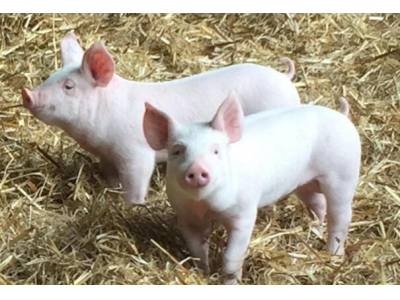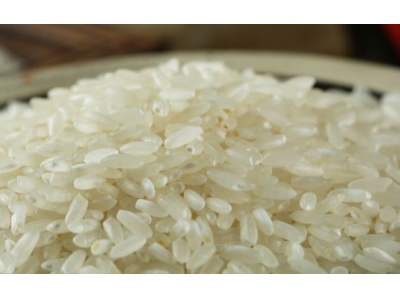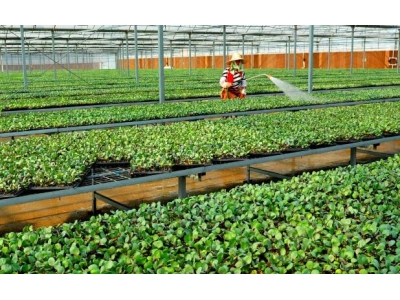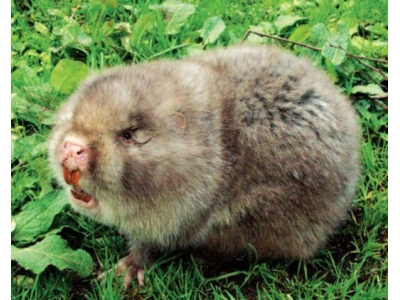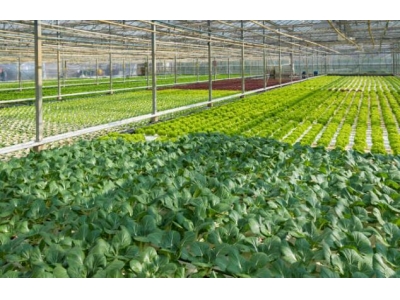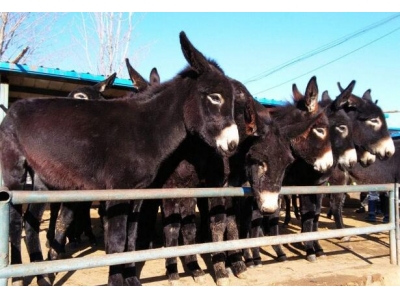一、了解猪口蹄疫O型灭活疫苗的预防作用
什么是猪口蹄疫?
猪口蹄疫是一种由口蹄疫病毒引起的急性传染病,主要传播给猪类,但也会感染其他有蹄类动物,如牛、羊和鹿等。该病毒会导致口蹄疫病变,包括口腔、蹄、乳房和外生殖器等部位的严重病变,对猪的生长发育和肉类质量也会造成严重影响。
预防猪口蹄疫的措施
为了控制和预防猪口蹄疫的传播,兽医界采取了多种措施,包括隔离患病动物、提高卫生条件、完善兽群管理和实施疫苗接种等。其中,疫苗接种被认为是最为重要和有效的防控措施之一。
猪口蹄疫O型灭活疫苗
猪口蹄疫O型灭活疫苗是一种基于O型口蹄疫病毒株的预防措施。该疫苗通过将活病毒进行灭活处理,保留了病毒的抗原性,使其能够诱导猪体产生免疫反应,从而增强对病毒的防御能力。
疫苗的预防作用
猪口蹄疫O型灭活疫苗在疫苗接种后,能够刺激猪体产生特异性抗体,提高猪的免疫水平,从而使猪对猪口蹄疫的感染和传播能力明显降低。通过疫苗接种,可以有效降低猪口蹄疫疫情的发生率和扩散速度,并最终控制和消灭该病。
注意事项
猪口蹄疫O型灭活疫苗的使用需要遵循相关规定和操作要求,包括正确的接种程序、接种剂量的掌握以及适当的保存和运输方法等。同时,疫苗接种应根据猪群的实际情况和流行病学特点进行合理的选择和时间安排。
结论
猪口蹄疫O型灭活疫苗作为预防猪口蹄疫的重要措施之一,能够通过刺激免疫反应提高猪的免疫水平,从而有效降低猪口蹄疫的感染和传播风险。合理、正确地使用疫苗接种,能够为猪群的健康提供保障,维护畜牧业的可持续发展。
感谢您阅读本文,希望通过了解猪口蹄疫O型灭活疫苗的预防作用,您能更好地掌握猪口蹄疫的防控知识,有效地保护猪群的健康和畜牧业的发展。
二、猪口蹄疫o型灭活疫苗冷冻了还能用吗?
各种疫苗。该冷冻的冷冻。该冷藏的冷藏。如果弄错了绝不可以再用。
三、猪口蹄疫O型灭活疫苗注射后有不良反应,急求帮助?
猪打疫苗时需要注意的事项:
1.猪群要处于健康状态,不健康的猪群,接种疫苗会引起更大的应激,导致疾病更加严重,所以若是应该接种,但群体不健康或是个别的不健康,需要等群体恢复健康后或是大群接种后,对个体进行补种疫苗。
2.疫苗要注意保存条件,需要冷藏的冷藏,需要冷冻的冷冻,还要定期关注冰箱冰柜的温度,发现问题,及时解决,避免疫苗因保存不当而造成的失效。
3.接种疫苗时最好能做到一猪一针头,特别是对于母猪,小猪可以做到一圈一针头,减少交叉感染的风险。
4.疫苗接种过程中,时刻关注猪只的应激反应,部分疫苗特别是油剂的如口蹄疫、细小等,会产生比较大的过敏反应,需要及时处置,注射肾上腺素或放血等。
5.疫苗接种后需要对器械及疫苗瓶进行消毒处理,减少散毒的风险。
接种了口蹄疫,不良反应很正常,会出现轻微的发热,不吃,精神不好等症状,这些都是正常的,可以不用过份去担心,对于温度在40度以内的可以不用管,超过40度的话,打点退烧的,比如柴胡一类的,就可以,一般半天或是一天就没事了。
四、牛口蹄疫灭活疫苗计量打多了咋办?牛口蹄疫灭?
口蹄疫打多了怎么办 看看你是打的疫苗多了还是抗体多了像口蹄健之类的同源血清大多了也没什么事
五、猪口蹄疫灭活疫苗:免疫程序及理由
为什么选择猪口蹄疫灭活疫苗进行免疫?
猪口蹄疫是一种高度传染性的疾病,严重危害猪类养殖业的健康和经济。为了控制和防止猪口蹄疫的蔓延,猪口蹄疫灭活疫苗成为最常用的防控手段之一。以下是选择猪口蹄疫灭活疫苗进行免疫的理由:
- 有效预防:猪口蹄疫灭活疫苗含有经过灭活的猪口蹄疫病毒,接种后能够引起猪类的免疫反应,并有效预防猪口蹄疫的感染。
- 安全性高:猪口蹄疫灭活疫苗经过严格的质量控制和检测,确保疫苗的安全性和有效性。接种疫苗不会引发猪类其他疾病或副作用。
- 成本效益高:与其他防控措施相比,猪口蹄疫灭活疫苗的成本较低,且只需一次或数次接种,就能够长期保护猪类免受口蹄疫的侵害。
- 广泛适用性:猪口蹄疫灭活疫苗适用于各种猪场规模,不论是小型猪场还是大型养殖企业,都可以采用疫苗接种来控制猪口蹄疫的传播。
猪口蹄疫灭活疫苗的免疫程序
为了确保猪类充分获得猪口蹄疫灭活疫苗提供的免疫效果,需要按照以下免疫程序进行接种:
- 确定接种时间:根据猪口蹄疫的流行情况和养殖场的具体情况,选择合适的接种时间。一般来说,最佳接种时间是在猪离乳后的3-4周。
- 接种前准备:接种前需要对疫苗进行充分摇匀,确保疫苗的均匀性和活性。同时,需要检查接种设备和场地的卫生状况,确保接种的环境无菌。
- 注射方式:一般采用肌肉注射的方式进行接种,可以选择颈部或臀部进行注射。注射前需要先消毒注射部位。
- 免疫剂量:根据疫苗的使用说明和猪的体重,确定合适的疫苗剂量。一般情况下,每头猪接种0.5-1毫升的疫苗。
- 监测和管理:接种后需要对猪群进行监测,观察疫苗接种后的免疫效果。同时,需要进行疫苗的管理和记录,确保免疫计划的实施和效果。
综上所述,选择猪口蹄疫灭活疫苗进行免疫是一种安全、有效且成本效益高的防控措施。通过严格按照免疫程序进行接种,可以更好地保护猪类免受口蹄疫的侵害。
感谢您耐心阅读本篇文章,希望通过这篇文章能够帮助您更好地了解猪口蹄疫灭活疫苗的免疫程序及理由。
六、口蹄疫有哪些种?O型口蹄疫有何特点?
在自然流行中发生在偶蹄兽,以黄牛为最易感(尤其是奶牛),其次为水牛、牦牛、猪,再次为羊、骆驼,野生偶蹄动物也能发生。人也可感染。在我国已发现口蹄疫病毒O型、А型、亚洲I型。以大流行和流行性多见,没有明显季节性,以寒冷季节多发,但在炎热的夏季也有发生。 病猪发热期,其粪、尿、奶、眼泪、唾液和呼出气体中均含病毒,以后病毒主要存在水疱皮和水疱液中,通过直接或间接接触,病毒进入易感猪的呼吸道,消化道和损伤的皮肤黏膜感染发病。最危险的传播媒介是病猪肉及其制品,还有泔水,其次是被病毒污染的饲养管理用具和运输工具。本病流行猛烈,在较短的时间内,可全群发病。继而扩散到周围地区。发病率很高,但病死率较低。
七、口蹄疫灭活疫苗打多了会有什么反应?牛、口蹄?
一般不会有什么反应。
个别牛会有应激反应,高烧不食,痉挛休克。
八、猪口蹄疫灭活疫苗免疫策略解析-猪口蹄疫疫苗接种的途径和注意事项
猪口蹄疫灭活疫苗免疫策略解析-猪口蹄疫疫苗接种的途径和注意事项
猪口蹄疫是一种极具传染性的疾病,对猪群的健康和养殖业造成了巨大的损失。为了有效防控猪口蹄疫的爆发和传播,兽医学领域提出了猪口蹄疫灭活疫苗的免疫策略。本文将对猪口蹄疫疫苗接种的途径和注意事项进行解析,以帮助养殖户和相关从业者更好地了解免疫策略和控制措施。
疫苗接种途径
猪口蹄疫疫苗的接种途径有多种,主要包括:
- 肌肉注射:这是一种常见的接种方法,通过将疫苗注射至猪的肌肉组织中,使疫苗成分能够迅速被猪体吸收,从而产生保护性免疫。
- 皮下注射:此方法将疫苗注射至猪的皮下组织中,让疫苗更好地与机体接触,以刺激机体产生免疫反应。
- 鼻腔喷雾:这种接种方式将疫苗通过喷雾器喷洒至猪的鼻腔内,让疫苗成分能够直接接触到鼻腔黏膜,从而诱导免疫系统产生免疫反应。
- 口服接种:此方法将疫苗混入饲料或饮水中,通过猪的口腔摄取疫苗,使其在消化道内产生免疫效应。
在选择合适的接种途径时,需要考虑猪的年龄、免疫力状态以及养殖管理水平。兽医专业人士建议结合实际情况,选择最适合的接种途径。
注意事项
在进行猪口蹄疫疫苗接种时,需要注意以下几点:
- 选择合格的疫苗:确保使用的是符合国家标准、质量可靠的猪口蹄疫疫苗,以保证免疫效果。
- 遵循正确的接种方法:根据厂家提供的接种说明进行操作,确保疫苗以正确的剂量、途径和时间接种到猪体内。
- 保证接种场所和设备的清洁:在接种前,要对接种场所和设备进行消毒,以避免交叉感染。
- 合理控制接种压力:确保接种过程中不过度造成猪体的应激反应,避免影响免疫效果。
- 配合其他防控措施:疫苗接种只是防控猪口蹄疫的一个环节,还需要配合做好其他防控措施,如疫区封锁、禁止猪群流通等。
通过正确的接种途径和注意事项,可以提高猪口蹄疫灭活疫苗的免疫效果,降低疫病的发生率。但需要强调的是,疫苗只能起到辅助防控的作用,全面做好养殖场的生物安全措施才是预防猪口蹄疫爆发和传播的有效手段。
感谢您阅读本篇文章,希望通过这篇文章,您能更加了解猪口蹄疫灭活疫苗的免疫策略,掌握接种途径和注意事项,以保障猪群的健康和养殖业的稳定发展。
九、猪O型口蹄疫的主要临床症状?
在自然感染情况下一般18~20小时就可发病,病猪主要表现为鼻镜、口唇形成水疱或突起,在蹄部有毛与无毛交界处、蹄叉、蹄踵、母猪乳房上发生水疱。在多数病例蹄部病变起于蹄叉侧面的趾枕前部,其次是蹄叉后下端或蹄后跟附近;发生水疱之处表现深红斑块,病猪体温升高到41~42℃,拒食、沉郁、卧地,蹄不敢着地,用腕关节爬行,严重的腕部磨破鲜血直流,个别猪因患部感染其他细菌而使蹄部烂掉。当水疱破后体温下降,一般4~7天康复。妊娠后期母猪患病,除有以上症状外还发生流产、死胎,产下仔后全窝全部迅速死亡;断奶仔猪发病常因病毒侵入心脏,引起心肌炎突然死亡,病死率可达60%。
十、灭活疫苗多少钱
The topic of vaccination has been a prominent one recently, with the ongoing COVID-19 pandemic that has affected the entire world. As scientists and researchers work tirelessly to develop effective vaccines, one type of vaccine that has gained attention is the inactivated vaccine, also known as a "灭活疫苗" in Mandarin. In this blog post, we will delve into the concept of inactivated vaccines and explore their significance in the fight against infectious diseases.What is an inactivated vaccine?
An inactivated vaccine, as the name suggests, is created by using a non-infectious version of the pathogen causing the disease. This is achieved by either fully killing the pathogen or rendering it incapable of replication. The inactivated pathogen is then used to stimulate an immune response in the vaccinated individual without causing the actual disease. By doing so, the immune system learns to recognize and combat the pathogen when encountered in the future.
Production process of inactivated vaccines
The production process of inactivated vaccines follows a standardized set of steps to ensure their safety and efficacy:
- Virus cultivation: The targeted pathogen is isolated and cultivated under controlled laboratory conditions. This step is crucial to obtain a sufficient quantity of the virus for further processing.
- Inactivation: Once sufficient virus quantity is obtained, either chemicals, heat, or radiation are used to inactivate the pathogen without compromising its structural properties.
- Purification: The inactivated virus is then purified to remove any unwanted substances, such as the chemicals used for inactivation, cellular debris, or other impurities.
- Formulation: The purified inactivated virus is mixed with other components, such as adjuvants, stabilizers, and preservatives, to create the final vaccine formulation.
- Quality control: The formulated vaccine undergoes rigorous testing to ensure its safety, potency, and sterility. This includes evaluating its ability to induce an immune response and absence of any contamination.
- Storage and distribution: Once approved, the inactivated vaccine is packaged, stored under appropriate conditions, and distributed to healthcare facilities for administration.
Uses of inactivated vaccines
Inactivated vaccines have been successfully used to prevent a variety of infectious diseases, including:
- Polio: The inactivated polio vaccine (IPV) has been instrumental in the global efforts to eradicate polio. IPV is given as a series of shots to provide long-term protection.
- Hepatitis A: Inactivated vaccines for Hepatitis A have proven to be highly effective in preventing this viral liver disease.
- Influenza: Each year, inactivated influenza vaccines are developed to protect against different strains of the influenza virus.
- Rabies: Inactivated rabies vaccines are used for both pre-exposure prophylaxis in high-risk individuals and post-exposure treatment after potential exposure to the rabies virus.
Advantages of inactivated vaccines
Inactivated vaccines offer several advantages:
- Safety: Inactivated vaccines cannot cause the disease they are designed to protect against. This makes them safe for a wide range of individuals, including those with weakened immune systems.
- Long-lasting immunity: Inactivated vaccines often provide longer immunity compared to live attenuated vaccines. This reduces the need for booster doses.
- No risk of reversion: Inactivated vaccines do not carry the risk of reverting to a virulent form, unlike live attenuated vaccines. This makes them suitable for individuals with compromised immune systems.
- Stability: Inactivated vaccines are generally more stable and have fewer storage requirements compared to live vaccines, making their distribution and administration easier.
Cost of inactivated vaccines
The cost of inactivated vaccines varies depending on multiple factors, such as:
- Manufacturing process: The complexity of the manufacturing process and the requirements for purification and quality control can influence the cost of inactivated vaccines.
- Research and development: Extensive research is conducted to develop and refine inactivated vaccines, which contributes to their overall cost.
- Distribution: The cost of distributing inactivated vaccines to healthcare facilities, particularly in remote areas, can impact their overall price.
It is important to note that the price of inactivated vaccines can vary between different countries and healthcare systems. In some cases, governments may subsidize or provide inactivated vaccines at reduced costs to ensure widespread availability.
To obtain accurate and up-to-date information on the cost of inactivated vaccines, it is advisable to consult local healthcare authorities, vaccination centers, or healthcare providers in your region. They can provide detailed information based on your specific requirements, including any potential discounts or subsidies available.
Conclusion
Inactivated vaccines play a crucial role in protecting individuals and communities from infectious diseases. Through their safe and effective mechanism, they have contributed significantly to the prevention and control of various viruses. While the cost of inactivated vaccines may vary, their impact on public health makes them a valuable investment. Stay informed, get vaccinated, and together we can build a healthier future.

